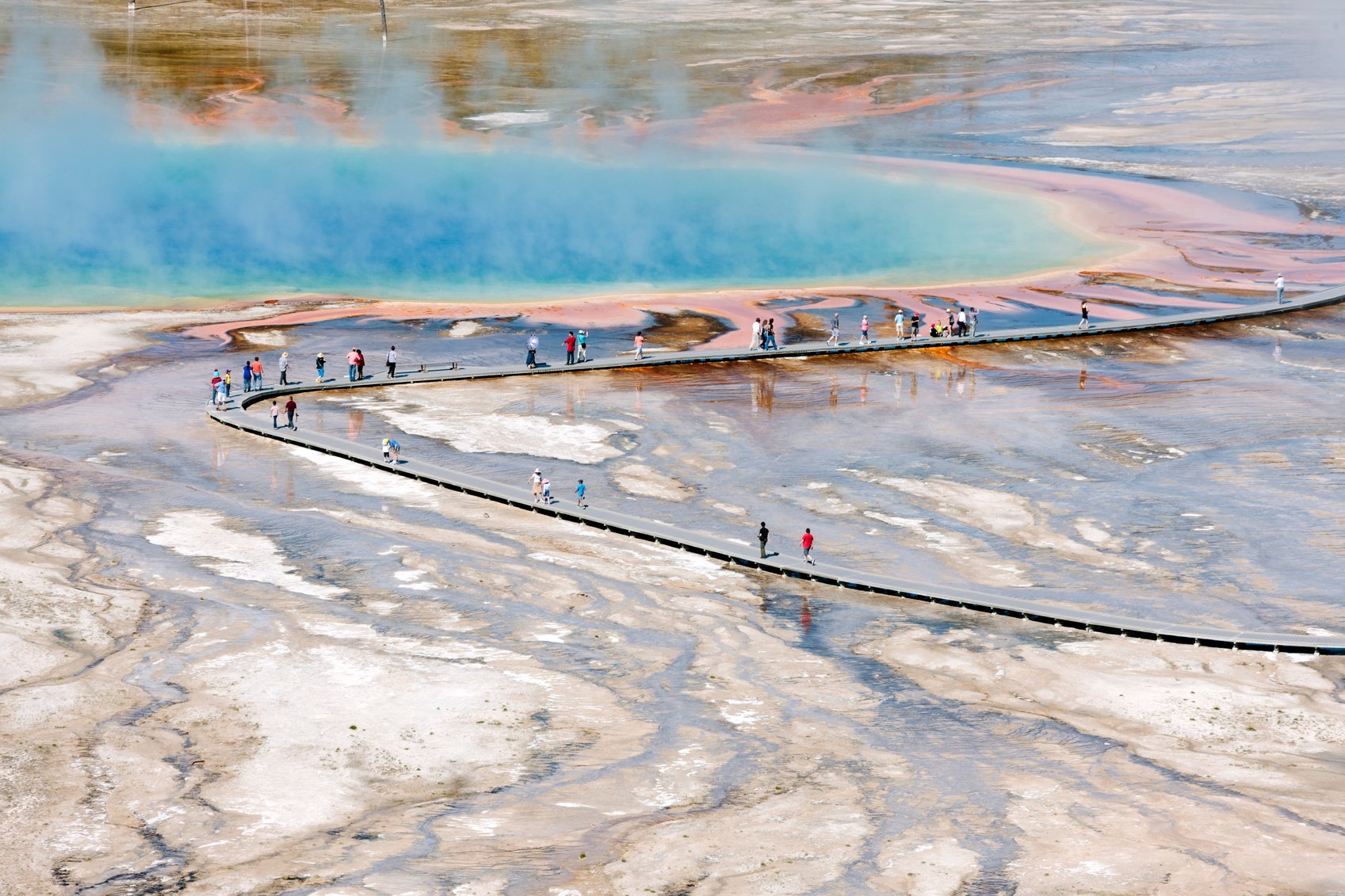The start to the 2016 Yellowstone tourist season has been interesting to say the least. With visitors continuing to make headlines for their ignorance or just plain lack of respect, it seems like the issues keep escalating. So far Yellowstone visitors have put a bison calf in their car, stomped across delicate grounds right up to the Grand Prismatic Spring, fallen into a hot spring, attempted to pet a bison, and walked on thermal features. It has many across America wondering, “What is wrong with people?” These incidents have lead to thousands of dollars in fines and caused Yellowstone officials to begin studying humans in the park along with studying the animals. All of this while Yellowstone prepares for what will no doubt be the busiest summer in history as they celebrate the 100th birthday of the National Park Service. So if you are planning a trip to Yellowstone as well, here are a few things to keep in mind.
The Animals Are Wild
While witnessing the majesty of nature in Yellowstone it is easy to get caught up in your connection with the animals. They are beautiful creatures that, at times, seem unphased by the cars, buses, and people. But do not be fooled. The animals in Yellowstone are wild, and they have an inherent instinct to protect themselves when they feel threatened. The fastest way to make an animal feel threatened is to get too close. More people are injured in Yellowstone by bison each year then than any other cause. Don’t get lured into a false sense of security because the animal appears to be docile. Observe the rules and stay at least 25 yards away from large animals – bison, elk, bighorn sheep, deer, moose and coyotes and at least 100 yards away from predators – bears and wolves.
Avoid Risk, Read Warning Signs
Whenever you venture into an unfamiliar place with unfamiliar surroundings it is best to follow the posted rules because they were created for a reason. In the first week of June a man slipped and fell into a hot spring in the Norris Geyser Basin when he and his sister left the boardwalk to go explore the thermal features. In a statement released by the park, Dan Wenk, the Park Superintendent said, “We extend our sympathy to the family. This tragic event must remind all of us to follow the regulations and stay on boardwalks when visiting Yellowstone's geyser basins." This was a tragedy that would have been avoided if only this visitor had heeded the warning signs that are posted along the boardwalks.
Animals and thermal features are not the only dangers in the park. Steep terrain, high observations points, fast moving rivers, and dangerous roads can all lead to injuries and worse. Please, come and enjoy the world’s first National Park, take in the beauty and all that Yellowstone has to offer, but be careful, be respectful, and leave it the way nature intended.


